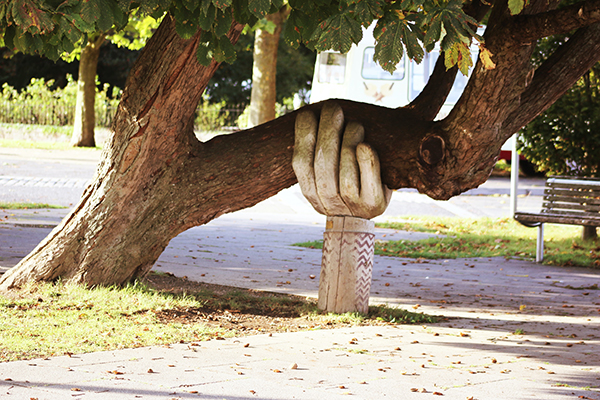News And Advice From The Leading Thousand Oaks Tree Trimming Company
Okay, let’s admit that we have it pretty nice here in the Conejo Valley. Flip on the weather channel and check out what the rest of the country is dealing with — even in summer. Torrential rain fall, hurricane winds, tornadoes… the list goes on.

Still, we had a heck of a winter in terms of rainfall. So even though our sunny, mild weather in the last couple of months may have put us at ease, the fact is that our beautiful trees have taken a heck of a beating. They may actually need some help when it comes to withstanding Mother Nature’s extremes. But what kind of help can you provide?
One popular and effective way to give your trees some needed support is with “cabling” or “bracing.” You may have seen this technique in use if you frequent parks or golf courses — anywhere that trees are abundant and professionally cared for.
Cabling or bracing are techniques used in arboriculture to provide additional support to trees that have structural weaknesses or are at risk of failure. It involves installing steel cables or rods into the tree’s branches or trunk to help redistribute the weight and reduce the likelihood of breakage or splitting.
When properly executed by a trained and experienced arborist, cabling can be an effective method for managing tree risks. It is most commonly used in mature trees with co-dominant stems (two or more large branches growing from the same point) or trees that have suffered from storm damage or other structural issues. Cabling can help to stabilize weak branch unions or reduce the risk of failure in heavy limbs.
However, it’s important to note that cabling is not a guaranteed solution, and its effectiveness depends on several factors:
Tree condition: Cabling is generally recommended for trees that are in reasonably good health. If a tree is severely decayed, structurally compromised, or experiencing significant decline, cabling may not be a suitable option.
Proper installation: Cabling should be performed by a certified arborist who understands the principles of tree biomechanics and follows industry standards for installation. Improper installation can potentially cause more harm than good and may lead to tree failure.
Regular inspection and maintenance: Cabled trees require periodic inspection to ensure that the hardware remains intact and effective. Cables can loosen or deteriorate over time, so regular monitoring and, if needed, adjustments are crucial.
Limitations: Cabling is not a permanent solution. It is meant to provide temporary support and mitigate immediate risks. In some cases, tree removal may be the most appropriate course of action if the tree poses significant danger to property or people.
It’s important to consult with a professional arborist or tree care specialist who can assess the specific situation and determine if cabling is an appropriate solution for your tree. They can provide expert advice based on the tree’s condition, its surroundings, and the potential risks involved.
If you’re wondering about the stability of any trees in your yard, give us a call. Heading off problems before they occur can actually be the best investment you can make.

